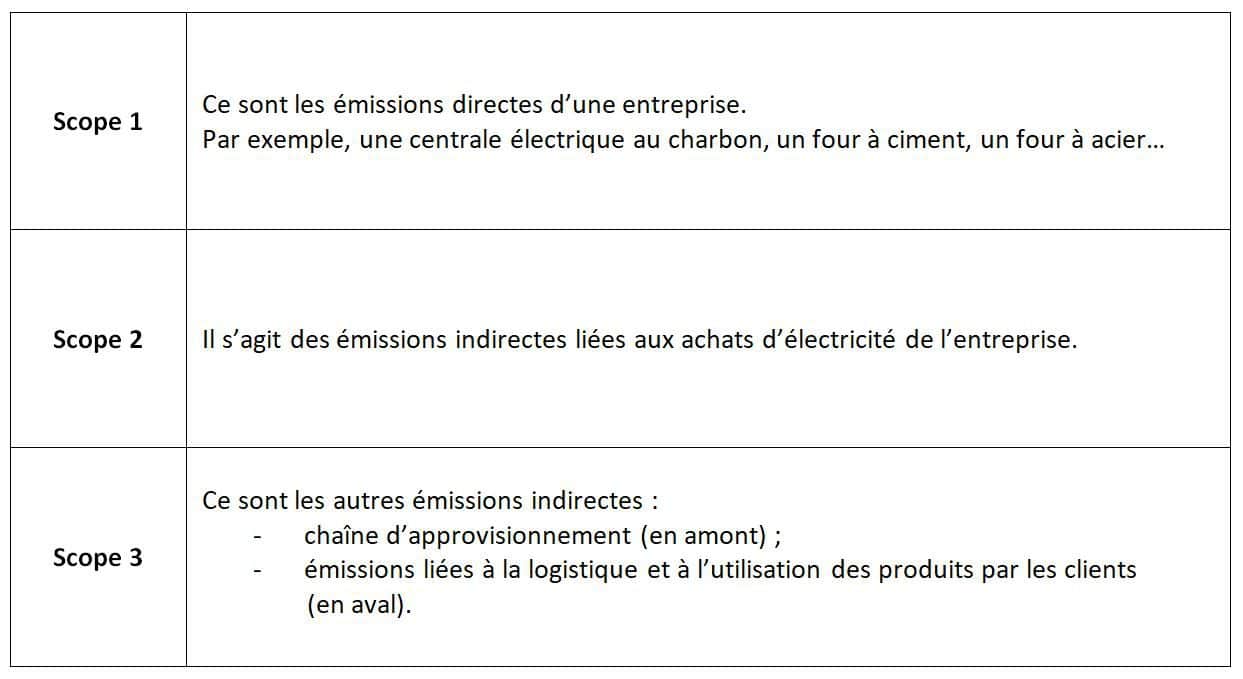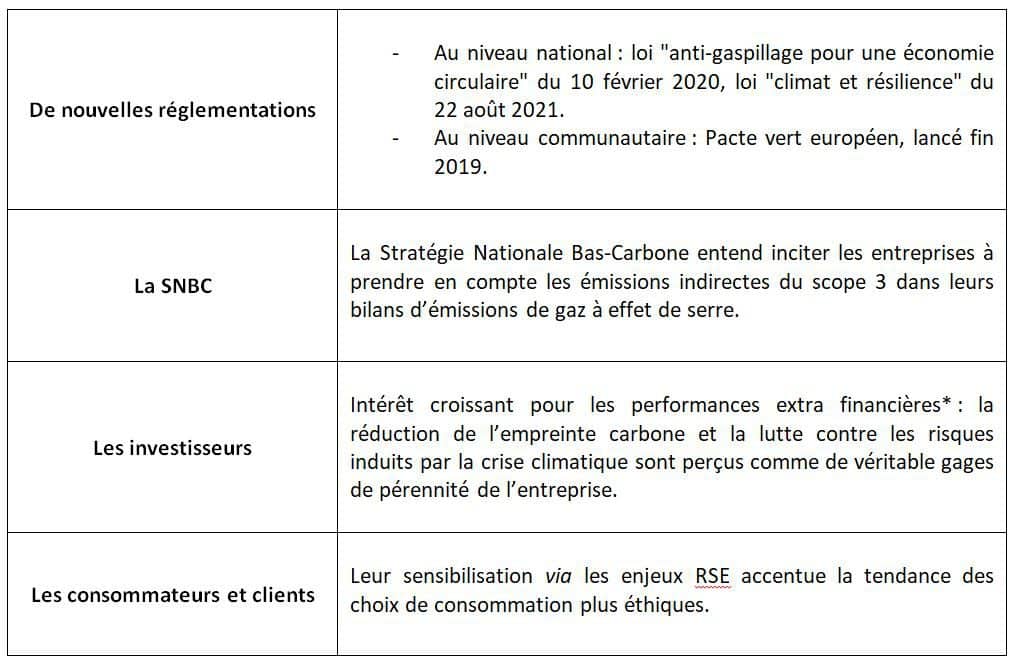We need to "accelerate the low-carbon transition", as the French High Council for Climate recently emphasised. At a time when "two-thirds of the French population are already highly or very highly exposed to climate risks", the reduction in greenhouse gas emissions must be supported ambitiously. For Martine Pallot, evaluator of the "Responsible Supplier Relations and Purchasing" label (RFAR), buyers are on the front line in reducing the carbon footprint at source.

Forests are burning, deserts are advancing, rising sea levels are threatening towns and islands... Never have climatic phenomena been as violent as in recent decades. In France, increasingly violent rainfall, heat waves and droughts illustrate this climate change. This is also the finding of the French High Council for the Climate (HCC) in its latest report on carbon neutrality. Strengthening mitigation, initiating adaptation - June 2021 : "the impacts of global warming are [font] already being felt in all French regions"..
One imperative: slow global warming
To tackle the climate crisis, the solution is known and shared by all the players: a more sustainable energy supply. rapid decarbonisation of the economy is necessary. In all sectors of activity. According to the experts, we have less than 10 years to limit global warming to 1.5°C by the end of the century. This is the conclusion reached by the IPCC (Intergovernmental Panel on Climate Change) in the first part of its sixth report, published last August.
The objective? Net zero emissions" or "net zero".
Following the 2015 Paris Agreement, the aim is to achieve complete decarbonisation by 2050 This is what we call the "zero net emissions or even net zero. This is not to be confused with carbon neutrality, which is satisfied with a balance between man-made greenhouse gas (GHG) emissions and their removal from the atmosphere by man. There is no commitment to reduce GHG emissions. With "net zero emissions", we are shifting the paradigm: the aim is to act upstream to reduce the quantities of GHG emitted by economic and social activity. in fine no longer emit them.
For France, "net zero" means divide by six greenhouse gas emissions compared with 1990 levels. This objective implies a profound transformation in the way we live, consume and produce. The National Low-Carbon Strategy (SNBC) provides guidelines for public policy to ensure a successful transition to this new economy.
But, as the HCC recently pointed outHowever, "there are still too many uncertainties surrounding the implementation of public policies. Overall, they are not sufficiently aligned with the SNBC's guidelines to ensure that low-carbon objectives are achieved by 2030".. The same applies to the Conseil d'État. The 1er Last July, the High Court ordered the government to take the necessary measures before 1 July.er April 2022, additional measures to meet the Paris Agreement target of reducing greenhouse gas emissions by 40 % by 2030.
Assess your greenhouse gas emissions and take action
The international standard (GHG Protocol) is used to account for GHG emissions. They are divided into three fields known as scope 1, scope 2 and scope 3 in order to be assessed.
Greenhouse gas emissions according to the GHG Protocol

Under the French National Commitment to the Environment Act of 12 July 2010, companies with more than 500 employees (and local authorities with more than 50,000 inhabitants) are obliged to account for their direct and indirect energy-related emissionsemissions, i.e. scopes 1 and 2. Accounting for the remaining indirect emissions (scope 3) is only recommended. However, its strategic importance is now well known. According to ADEME, scope 3 often represents more than 80 % of a company's emissions.
There are a number of factors that may be prompting companies today to define new strategic lines of development. These include new regulations, the SNBC, investors, consumers and customers.
Incentives for companies to take GHGs into account

* The Extra-Financial Performance Declaration (EFPR) is a regulatory requirement for certain companies, which consists of publishing a declaration covering the main CSR risks associated with their business. It is structured around four themes: social, environmental, anti-corruption and human rights.
This is the case for French Schneider Electric with the Zero Carbon Project which looks at emissions from the Group's suppliers and emissions linked to the use of products by customers (scope 3).
Purchasing at the heart of low-carbon strategies
Purchasers are in the front line when it comes to decarbonising their companies. Purchasing represents more than 60 % of sales emissions. They are therefore an essential part of any policy to reduce the carbon footprint. At present, buyers' contribution to carbon reduction concerns scopes 1 and 2. This mainly involves :
- reduce energy consumption ;
- change the energy consumption mix by developing renewable energies;
- renewing vehicle fleets, giving priority to electric cars;
- supporting Green IT initiatives to develop the circular economy and improve energy efficiency.
Reducing Scope 3 GHG emissions means taking into account the entire value chain and therefore find out about CO2 suppliers. It's up to buyers to help them quantify their emissions, set reduction targets and implement low-carbon strategies.
It's a real big bang in the purchasing function We need to organise ourselves to collect data from suppliers, enable the company to better identify risks, and create the conditions for innovation to drastically reduce carbon emissions.
Training buyers to develop a new purchasing logic
Making a success of the ecological transition also means training buyers:
Training for new challenges
Understanding CSR issues and risks is the first step in raising buyers' awareness of overall performance (economic, environmental, social and societal) and deploying a new purchasing logic. This approach is developed in the Responsible purchasing: reconciling purchasing performance and CSR issues.
Training in new tools
Learn about the circular economy, the environmental footprint, LCA (life cycle analysis) and eco-design... for example, with the Ecodesign of digital services. The aim is to reduce greenhouse gas emissions throughout the value chain.
Training in supplier capital
Suppliers are becoming an external resource for the company. Buyers need to be able to communicate, share issues and develop a supplier relationship based on listening, trust and cooperation. And they must do so in accordance with the RFAR Charter and Label. The training Working with suppliers to innovate contributes to the development of supplier relationship management.


